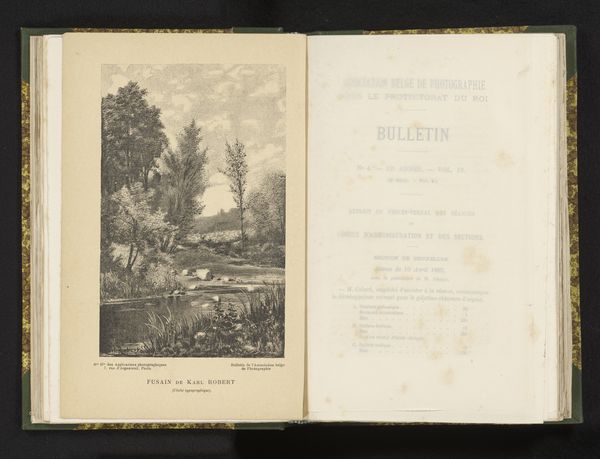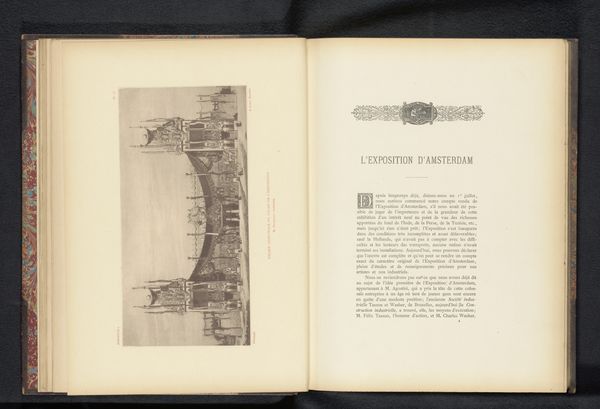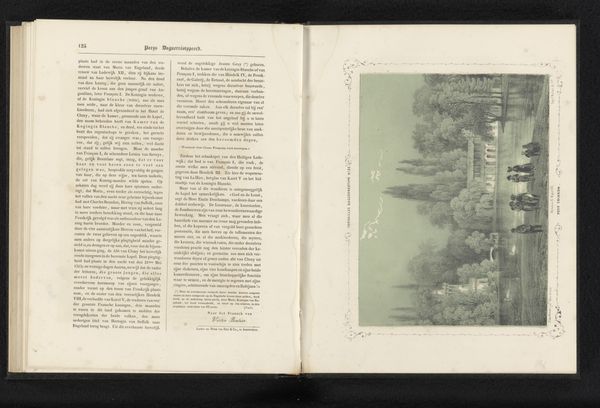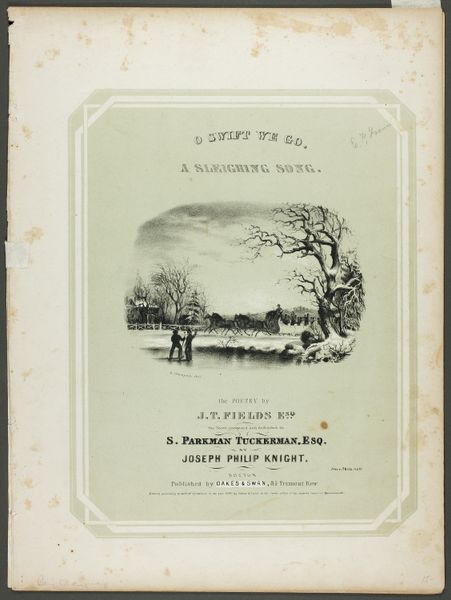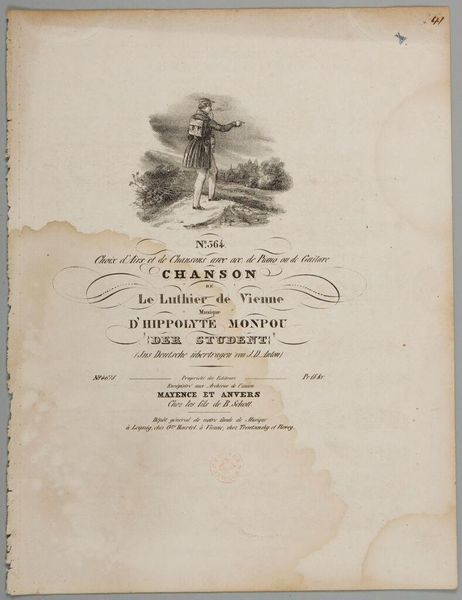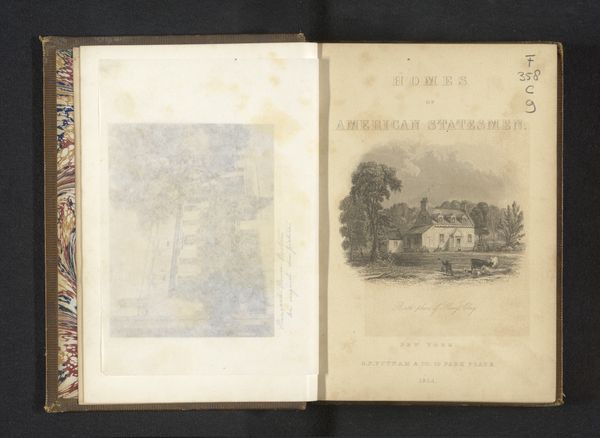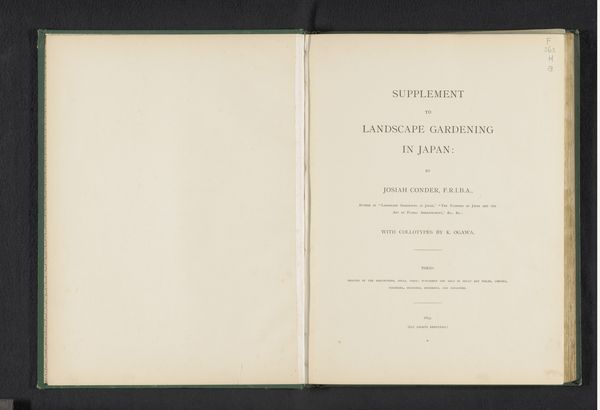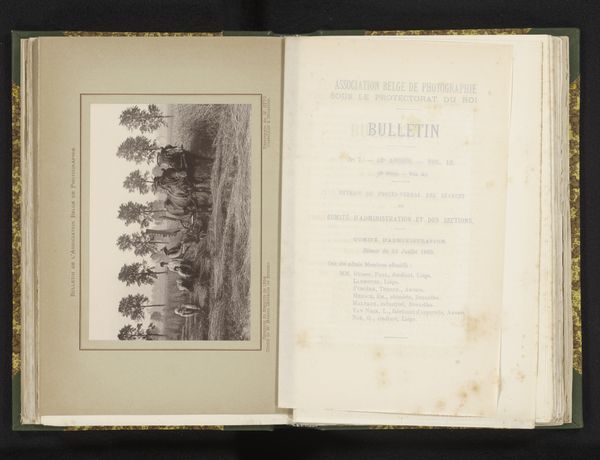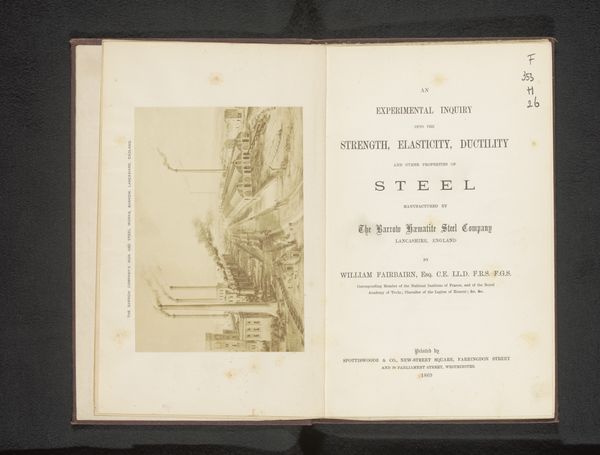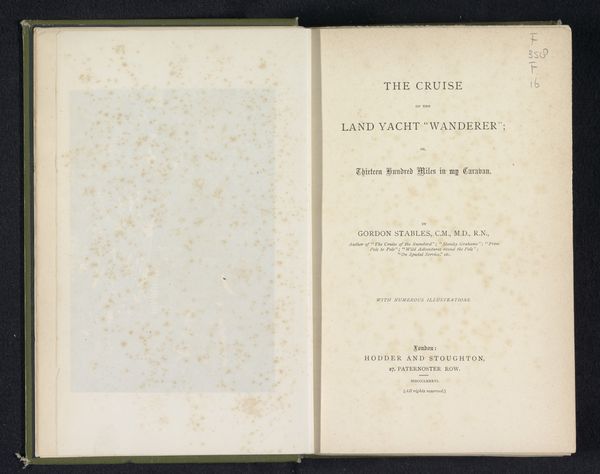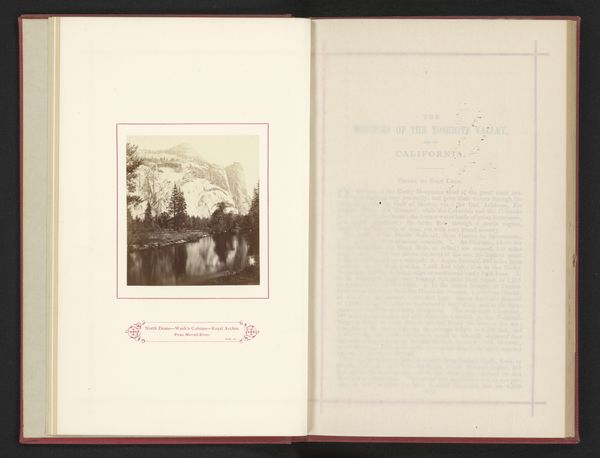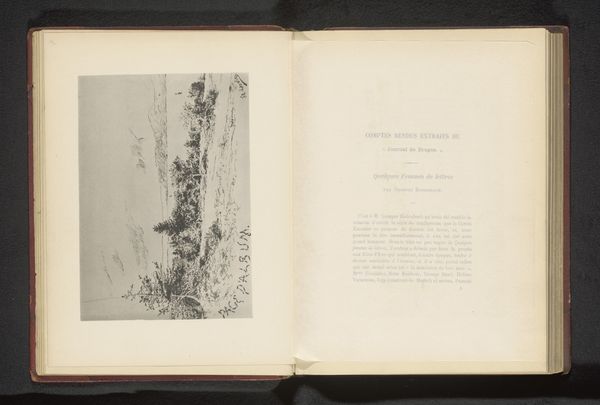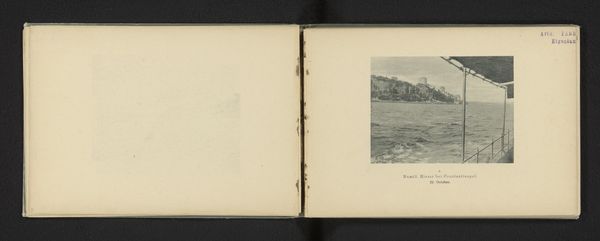
A history of Lichfield Cathedral, from its foundation to the present time : with a description of its architecture and monuments 1870
0:00
0:00
print, photography, gelatin-silver-print, architecture
# print
#
book
#
landscape
#
photography
#
coloured pencil
#
gelatin-silver-print
#
architecture
Dimensions: height 217 mm, width 172 mm, thickness 24 mm
Copyright: Rijks Museum: Open Domain
Curator: Immediately striking, isn’t it? The reflected symmetry creates this rather haunting doubling of architectural form. Editor: Yes, the symmetry certainly is the dominant feature. And the tonal range is narrow, creating this somber, almost monochromatic field. Let's give some context, though. What exactly are we looking at? Curator: This is a photograph of the book, *A History of Lichfield Cathedral, from its Foundation to the Present Time,* published in 1870. The photograph, a gelatin-silver print, likely also taken by John Benjamin Stone, the author. Editor: It's interesting how the photographic image and textual presentation combine in this singular object. This reflects, perhaps, the late nineteenth century's investment in simultaneously recording and romanticizing history. It turns what would otherwise be an informative publication into an aesthetic object, reflecting its particular historical moment. What about the making? Curator: We should consider the rise of photographic printing during this time and its increased affordability to a wider consumer base. The use of photographic illustrations directly within a published historical account blurs the lines between objective document and commodity, speaking to broader questions of access and consumption of historical knowledge within Victorian society. It positions historical understanding itself as a kind of artifact to be handled and circulated. Editor: And considering form specifically: the delicate texture given the print, that soft sepia tonality—these choices pull us in. It makes something that could have been a rather clinical presentation into an atmospheric vision. I am caught by that reflected doubling: It echoes and reinforces the Cathedral's imposing physical presence, offering a kind of transcendent serenity. The mirroring hints at eternity itself, the enduring legacy of both the cathedral and Stone's attempt to document it. Curator: Indeed. This book serves not merely as historical documentation but as a lens through which Victorian ideals of progress, preservation, and even national identity were constructed and disseminated through both image and text. The physical book becomes the vehicle, and we, centuries later, continue to participate in its circulation and interpretation. Editor: I appreciate the interplay here: structure meeting circulation, aesthetic choice mingling with Victorian enterprise.
Comments
No comments
Be the first to comment and join the conversation on the ultimate creative platform.
